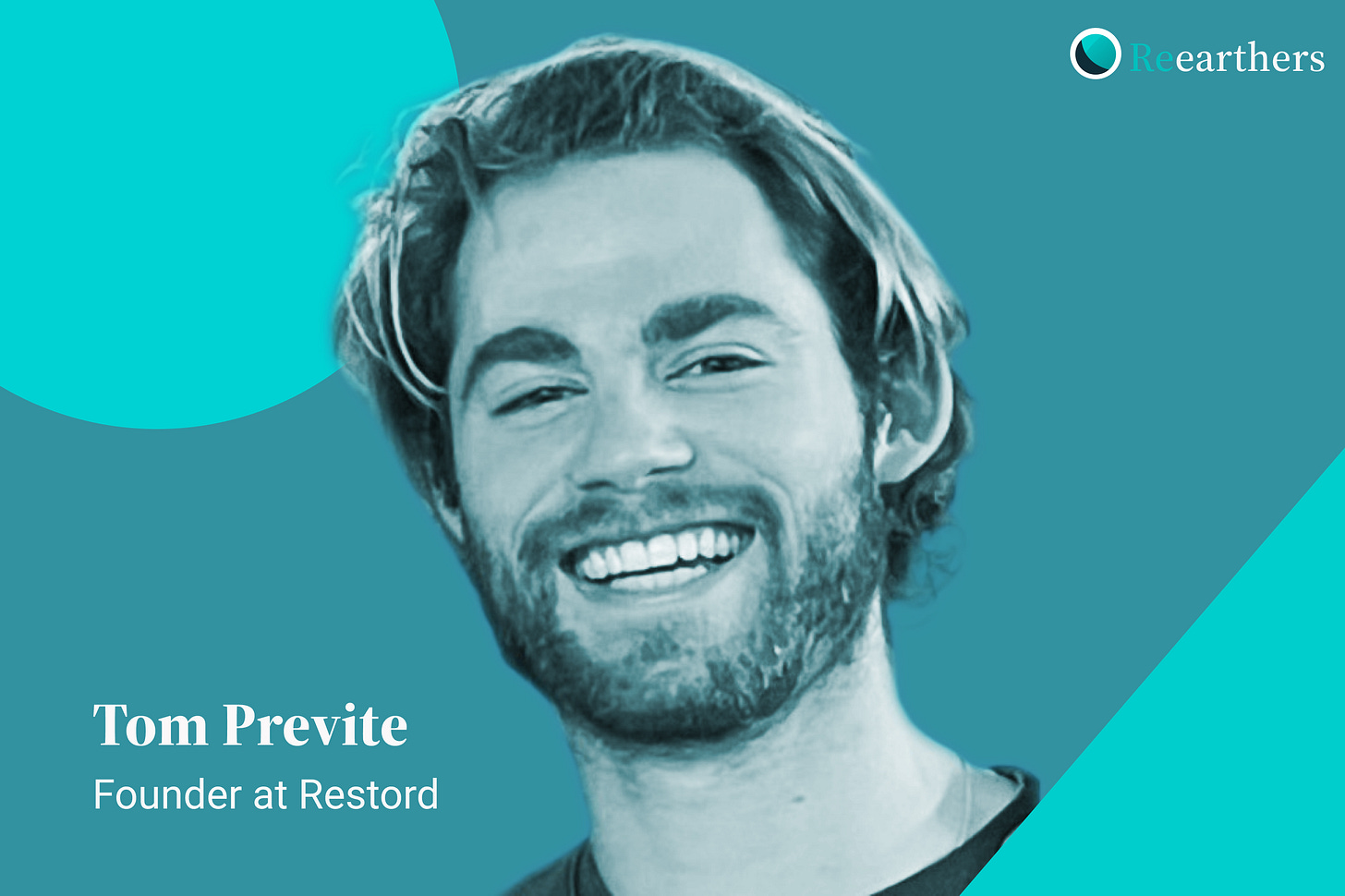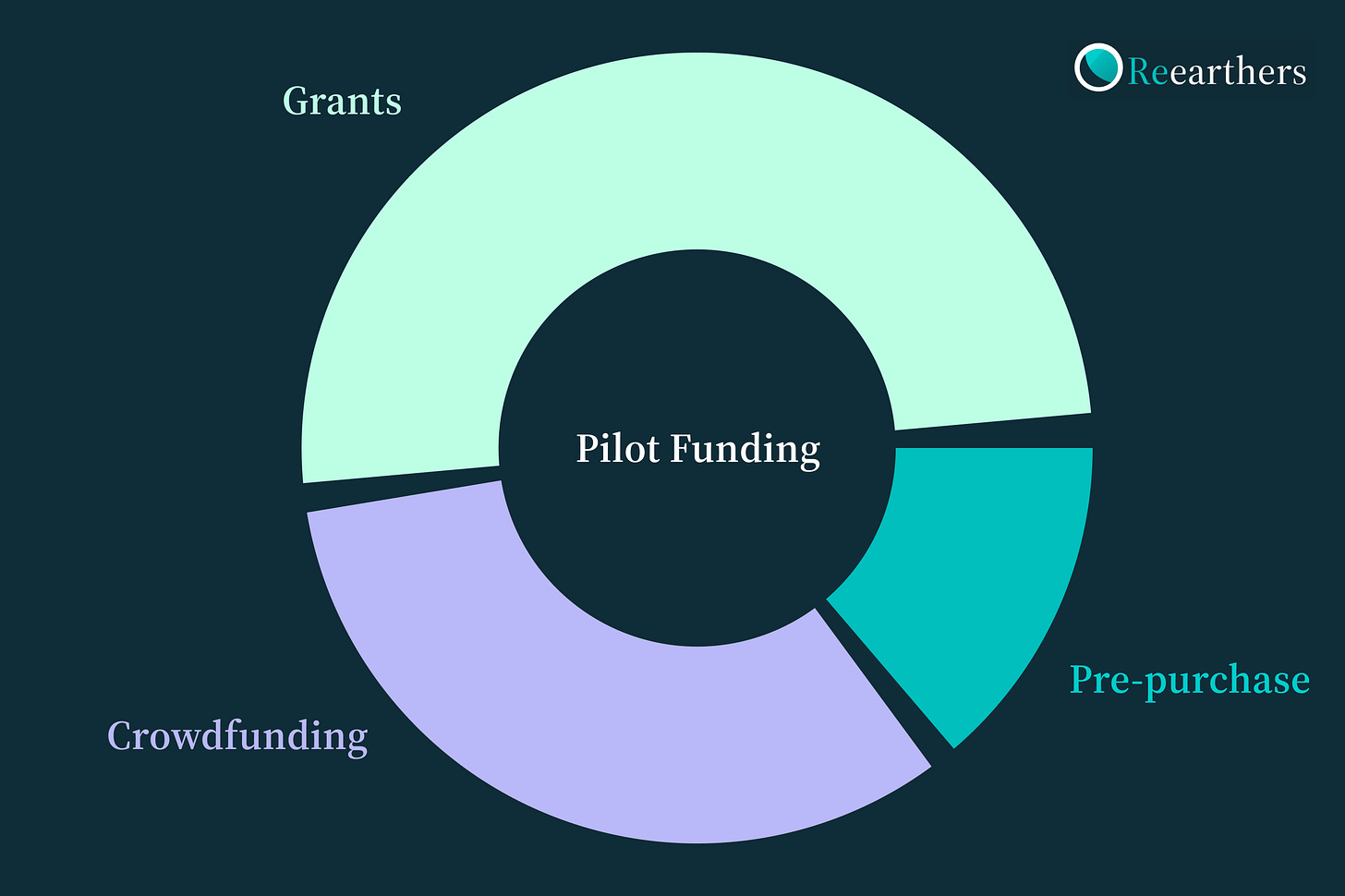#2 How an early-stage Developer approaches funding for his biochar project
Developer insights from the founder of Restord, and a key question that CyanoCapture needs answering!
Hello, and welcome to the first edition of our newsletter. We’re Reearthers, and each month we share actionable insights from interviews with Developers, and key questions that the CDR ecosystem can help to answer.
To receive this newsletter in your inbox weekly, consider subscribing 👇
About this month’s Interviewee
What makes Restord different?
Restord is currently one of a handful of biochar CDR projects based in the UK. Founded by Tom Previte, previously co-host of the “Carbon Removal Show” podcast and now documenting his project startup journey via the “Grounded: a climate startup journey” pod, Tom shared a few hard-won lessons on marketing and securing funding for his initial pilot project.
⭐️ Quote of the Month
“Get grant funders on the phone directly to understand what’s important to them in the application process”
— Tom Previte, Founder of Restord
Top Three Conversation Takeaways
👨💼 Building your network as an early-stage Developer: find who is prominent in your pathway area; who is prominent in Policy supporting your pathway; who are the early Buyers for your pathway?
📣 Marketing your CDR approach: lean into your strengths and what you know; share the truth of how hard it is to start a CDR project
💰A mixture of funding sources will be needed to support a pilot project, but not Venture Capital if you’re a pure project developer
How do you go about building your network as an early-stage Developer?
When we were working on the first series of the Carbon Removal Show podcast and the challenge of structuring it, we started with the why of CDR but quickly realised there was confusion for people around the different methods.
So we read IPCC reports and the CarbonPlan primer on CDR and had episodes on different pathways for example biochar; BECCS and DAC.
We sought to establish who is prominent in each pathway area; who is prominent in Policy supporting the pathway; who are the early Buyers for this pathway?
CDR is a niche of Climate Tech and then biochar is a niche of CDR. So, there is no such thing as an overall CDR expert, you have biochar experts; DAC experts etc.
I came to believe I was a biochar expert, but soon realised I actually have so much more to learn! For instance, biochar can have different biomass input materials and different application use cases for example for Agriculture or for the Built Environment.
You need to know enough to get to the next key milestone, for instance being able to start your pilot project. You do need to have spells of looking in and consuming knowledge, but this can get distracting so you then also need to look outwards and converge. I am onto converging now.
How do you market biochar as a CDR approach?
I decided to lean into my strengths and what I know how to do well and that is to create a compelling podcast. I know the impact it can have on building a community. I just made recording everything a habit; for the first Grounded podcast series of five 30 minute episodes we have over 50 hours of content.
I thought why don’t we just document our journey? There is still a lack of awareness about CDR among many corporate Sustainability Leaders so the podcast is acting as a public service announcement by going super deep into just biochar.
I wanted to tell the truth about how hard it is to do a CDR project; get the market intermediaries like Registries and Marketplaces to understand how challenging it is for early-stage Developers.
There are not enough Buyers currently, but if you can really help them understand the ins and outs of the project, they will gain deeper trust in your pathway and be more likely to make Pre-purchases.
Candidly Corporates don’t need to care today about CDR: no one is mandating it yet, so it won’t get on the agendas of busy Sustainability Leaders.
Bodies like the SBTi need to make the case for removals alongside emission reductions. CDR is nice to have today.
How did you go about funding your pilot project?
In terms of finding early Buyers, I benefitted from spending two years at a Marketplace selling carbon removal to Buyers, so I understand their characteristics of being advanced in their industry; performing well financially; engaged on climate and oftentimes BCorps at the lower size end of the market, so they buy removals from an altruistic perspective.
I used my Buyer network of businesses I wanted to stay in touch with from the Marketplace days. Bennetts Associates are one such company; big on biochar and they loved the story of supporting an early-stage Developer project directly.
In regards to navigating other sources of funding for the pilot project I talk from a UK perspective. To run the project across 2024 I costed it out to be £100,000 covering the machinery required and a salary for two people.
For equity financing, we are not attractive enough to Venture Capitalists as we are pure project developers and still too early-stage. I did consider Angels but said to myself “let’s try to fund off Grants as we’re not sure where the pilot will go” and Angels can often be friends, and the terms still wouldn’t be good given our early-stage.
This left a mix of Pre-purchases from Buyers and 9-10 Grant applications, in addition to a Crowdfunding campaign with funding match from Cornwall Council.
We’ve ended up at 10-15% Pre-purchases; 30-40% Crowdfunding and the rest from Grants.
Be open with potential keen early Buyers how important their Pre-purchases are to us as Developers.
In terms of writing Grant applications, try to get the grant funders on the phone directly to understand what’s important to them in the application process. The focus on the impact of your project for different communities is often important. Be sure to write a very strong first application and then you can often manipulate for subsequent ones. You’re doing really well if you win 1 in 4 Grants. In future, I’d apply for more Grants if I knew which ones to go in for.
Regarding Venture Capital, really think about what type of business you’re building: are you a pure project developer or are you developing Intellectual Property. Will what we’re doing be catalytic enough in terms of tech and hardware innovation?
A part of the pilot process is to answer this question for myself: which route do I take?
A big thank you to Tom for sharing his story with us this month.
If you're an early-stage CDR Developer and would like to share your experiences, we'd love to hear from you!
🙋 Help Your CDR Peers!
We are building a question-based knowledge sharing platform where you can learn directly from your peers. Sign up now for early access.
🔬 Question of the Month
Question on Torrefaction to Burial vs. Pyrolysis to Soil Application as CDR techniques - from Kiran Gathani at CyanoCapture:
“Decreasing the temperature of the thermochemical reaction decreases the chemical durability of the solid fraction leaving the reactor, as measured through the H/C and O/C ratios amongst a variety of other metrics. Yet increasing the temperature of the thermochemical reaction leads to a smaller mass of the solid fraction leaving the reactor as more of the feedstock is converted into syngas. If the solid fraction is what is sequestered, then using a lower temperature pyrolysis reaction increases the flux of CO2 from the feedstock into the system's mode of sequestration. Per tCO2 in the feedstock, a greater percentage is sequestered.
The status quo in the biochar-based CDR space is to sell the biochar and use it as a soil enhancer. If we were to implement a shallow burial system the solid fraction leaving a lower temperature pyrolysis reaction instead, then does this more durable sequestration system compensate for the substance's lower level of chemical durability? How might one go about testing this hypothesis?”
Get in touch if you want to share your thoughts.
Thanks!
Siwei & Matt




